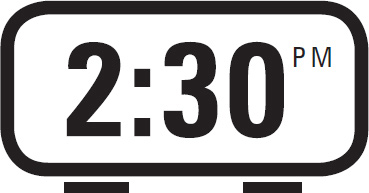

There he is, the hot coworker of your intimate dreams, eating a meatball sub while gazing down the hall toward your cube with a look of pure rapture. There she is, your boss, pushing her horn-rimmed glasses back up the bridge of her nose while eyeing the report you just landed on her desk. What do these people mean by these gestures? The secret is putting yourself in their shoes and trying out the same gestures to see what you would mean if you were doing the same things. Actually, your brain does this for you automatically.
We know because in the 1980s a group of Italian researchers inserted electrodes into the brains of monkeys to record the firings of neurons in response to the monkeys’ motions. A monkey would move its arm, neurons would either fire or not fire, and through this painstaking process of probing and checking, the researchers went about mapping the homes of these movements in the monkey brain. Now, watching monkey brains is hungry work. And rather than taking time away from the task of monkey monitoring, researchers brought their food to the lab. You can imagine researchers staring at monkeys as the monkeys brought food repetitively from a dish to their mouths while the monkeys stared back at the researchers doing the same. Of course, the researchers saw this eating action in the monkeys’ brains—hand to food, food to mouth, neuron fires, repeat ad infinitum.
Only it wasn’t just when monkeys fed themselves that the Italian researchers saw these “feeding” neurons firing in the monkey brains. When the researchers ate, monkey brains were activated as if the monkeys themselves were being fed. You know the feeling of standing around in a group in which one person has brought a latte and the rest of you watch and drool? Your envy is driven in part by the fact that your brain is experimenting with what it would feel like for you to have a latte too.
When monkeys watch researchers eat, their brains mimic the action. When you experience another person, your brain can’t help but mirror their actions and emotions, trying them out as if they were shadow actions of your own.
This mirroring is due to special cells called mirror neurons, which live in your brain but keep a close eye on the people around you. When someone smiles at you, your mirror neurons try out the smile in your own brain; when someone frowns or eats M&Ms, it’s as if you frowned or ate M&Ms. Despite what you’ll read elsewhere, that’s about the extent of what we know for sure about mirror neurons: they exist, they mimic others’ actions, and they’re very, very cool.
There are three theories of why we have mirror neurons. Maybe we have them because in our evolutionary past, it was nice to know if Thog was suggesting that you work together to take down a mammoth or suggesting that he was going to end you in a messy way. Another theory is that we evolved mirror neurons so that we could learn from others’ experience. You know that you learn from your own experience: the more you throw darts or paint brushstrokes or hit a tennis ball, the better you get at these things. But you can also learn by watching other people do these things, and perhaps mirror neurons allow you to encode others’ actions more precisely in your brain. Maybe by automatically imitating others’ actions, you get a trickle-down version of this training yourself. Finally, mirror neurons may allow you to empathize. When you say to a friend “I feel your pain,” mirror neurons may make it literally true—and this mirror representation of another person’s emotion may be why, when you’re with someone who is anxious or depressed or elated, you can feel the emotional residue of their experience.
With this take on the role of mirror neurons in empathy comes a proposed link between the malfunction of mirror neurons and autism. This link even has its own catchy name: the “broken mirror” theory of autism. Still, for now there are compelling papers on both sides.
In a fascinating condition called echopraxia, people compulsively imitate others’ movements—what you see is what you do—and increasing evidence shows that the condition may be due to the inability to inhibit the urges of mirror neurons. When watching another person act, most brains reenact a version of that movement, but the brain is where it ends. In echopraxia, mirror neurons spark real movements. But we all have a shadow of this compulsion—when a conversation partner props an elbow on the table, you want to do the same (and the more empathically connected you feel with this person, the stronger your compulsion to copy). Next time you have a conversation, try to be aware of how your conversation partner’s actions influence your own, and if you like, see if you can get the other person to copy your gestures or body language. The degree of copying can show you how strongly your conversation partner’s mirror neurons are firing in your honor.